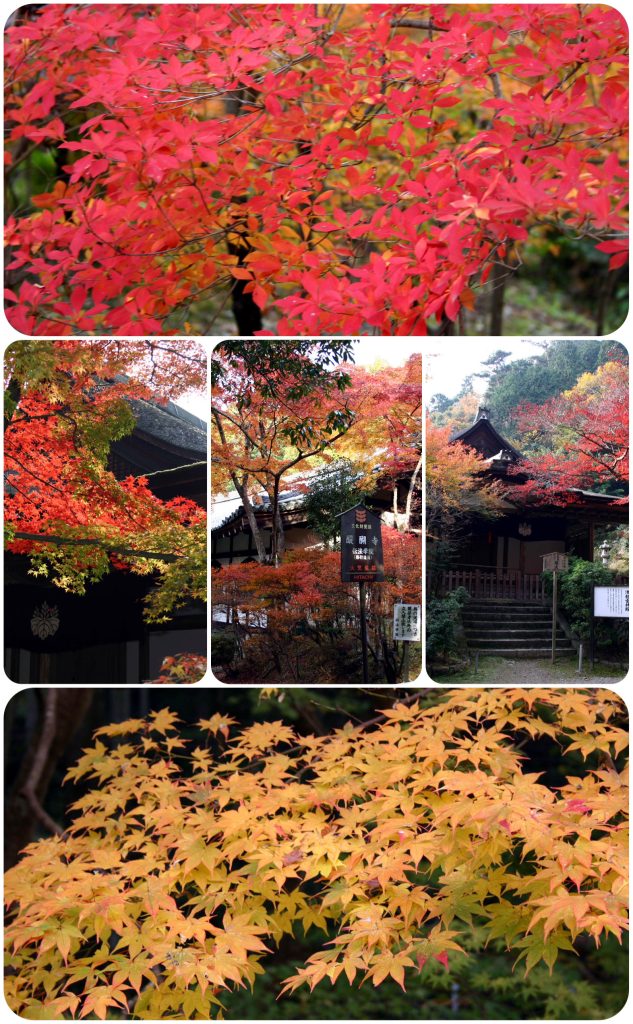
醍醐寺 (Daigo-ji Temple), famous for its “Daigo no Hanami” cherry blossom viewing, is now adorned with vibrant autumn foliage, attracting numerous tourists.
Established in 874 by the disciple of the renowned Kobo Daishi Kukai, Monk Shobo, it stands as the head temple of the Shingon sect Daigo school. Embracing the entirety of Mt. Daigo within its precincts, this vast temple spans 2 million square meters, ranking among Kyoto’s foremost grand temples.
With a rich history, it has garnered support from emperors, nobles, and warriors since its inception. Despite facing multiple fires, including those during the tumultuous Onin War, much of its architecture and artifacts, including national treasures and important cultural properties, have been preserved and passed down. Recognized as a UNESCO World Heritage Site, the temple faced a period of decline until its revival by Toyotomi Hideyoshi.
Hideyoshi orchestrated a grand event known as the “Daigo no Hanami,” inviting daimyos from across the country. To enhance the spectacle, he commandeered 700 cherry blossom trees. This event, comparable to the “Kitano Tea Gathering,” became a monumental feast in Hideyoshi’s life. Despite his passing five months after the celebration, the cherry blossoms he left behind continued to flourish at Daigo-ji, symbolizing his legacy.
Amidst the anti-Buddhist movements during the Meiji Restoration, many temples were forced to sell or lose their treasures. In contrast, Daigo-ji Temple, through the efforts of its abbots and monks, successfully retained its treasures, preventing any leakage to the outside. These precious artifacts, safeguarded throughout its extensive history, include numerous national treasures and important cultural properties, now carefully housed in the Reihokan (Treasure Hall).
「醍醐の花見」で有名な醍醐寺が紅葉の見頃を迎え、多くの観光客が押し寄せています。
真言宗醍醐派の総本山の醍醐寺は、874年に、弘法大師空海の孫弟子、理源大師聖宝によって開創されました。醍醐山全体を寺域とする総面積200万坪からなる広い境内を持つ、京都でも屈指の大寺院です。多くの国宝・重要文化財を含む、建造物・仏像・絵画・文書を伝承しており、世界遺産にも認定されています。
開創以来、醍醐天皇を初めとする皇室や貴族や武士の支援を得て隆盛を極めていましたが、長い年月の中で、応仁の乱など相継ぐ戦乱で何度もの火災にもあい、五重塔以外の建物は皆焼失してしまう憂き目を見ることになります。
そんな醍醐寺を再興させたのが豊臣秀吉です。全国から700本もの桜を取り寄せ、諸国の大名を招待して「醍醐の花見」を催しました。「北野の茶会」と並ぶ秀吉一世一代の大宴会です。秀吉はこの「醍醐の花見」の5ヶ月に亡くなるのですが、秀吉の残した桜がその後の醍醐寺を盛り立てる事になります。
明治維新の廃仏毀釈が吹き荒れる中、他の多くの寺院が寺宝を売り払うなどして流出させてしまったのに対し、醍醐寺は座主をはじめとした多くの僧の努力もあり、一つの寺宝も外に漏らすことなく、守り抜いたのです。長い歴史の中で伝えられてきたこの貴重な寺宝は、大半が国宝や重要文化財に指定され、現在も霊宝館(宝物館)に大切に所蔵されています。
